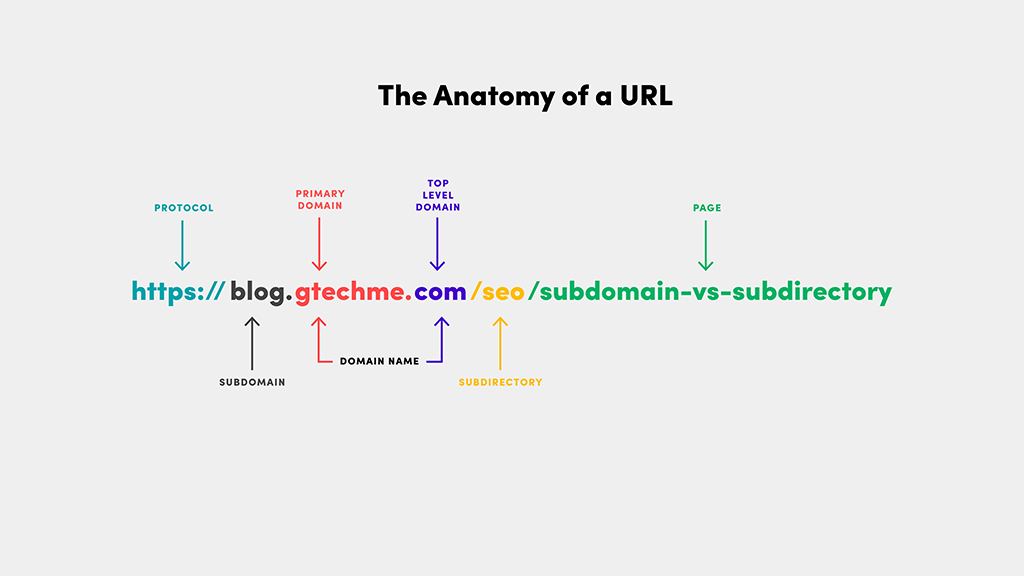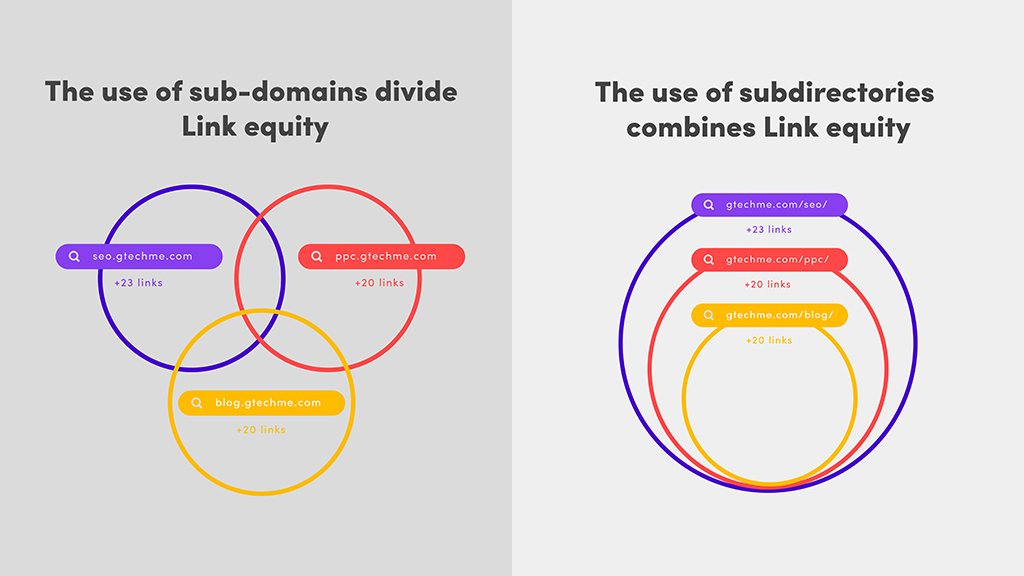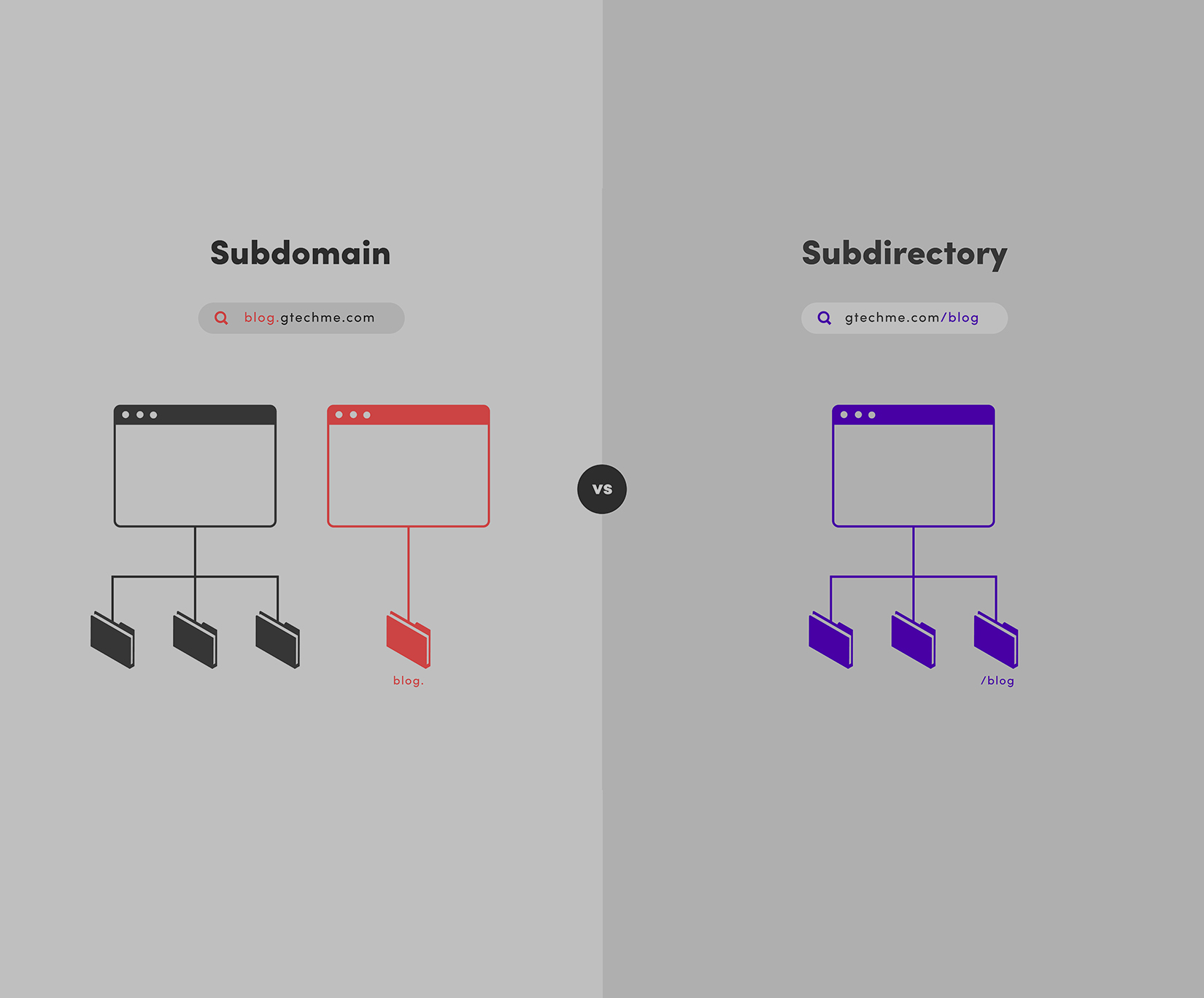Experts have been discussing the topic of “subdomain or subfolder: which is better for SEO” for years. What is the difference between the two, subdomain vs. subdirectory, and which one best suits your global SEO needs?
Anatomy of a URL
A Uniform Resource Locator (URL) typically follows the following structure:
protocol/scheme + subdomain + domain name + subdirectory + page
This text is the address of a website or resource.

Defining Subdirectory vs. Subdomain
Before getting into which is better for SEO and why let’s take a look at what is what: subdomain vs. subdirectory:
What is a subdirectory?
The part of the URL that comes after the domain is the subdirectory. A subdirectory houses topically-related content like how folders are used to categorize documents. For this reason, subdirectories are also called subfolders.
What is a subdomain?
On the other hand, a subdomain is the section of the URL that comes before the domain. A subdomain is a segment, child, or subset of the main domain. Instead of using folders to organize and house content, a separate website under a root directory is used instead.
What Google Says About Subdirectory vs. Subdomain SEO
While Google ranks subdomains and subdirectories more or less the same, they are still deemed different. To be more specific, a big difference between a subdomain and a subdirectory is how they are considered.
Google treats subdomains as entirely different and separate standalone sites. This means that a subdomain will have a different ranking in comparison to its root or main domain.
On the other hand, subdirectories or subfolders are considered parts of a website.
SEO Reasons to Use Subdomains
Subdomains are better suited from an SEO point of view if your website has various departments, regions, languages, a blog, an eCommerce store, events, or a mobile version. If you are content with your current overall site traffic and have a relatively big company or business, your SEO will not be greatly affected by having various “separate” sites in Google’s eyes.
SEO Benefits of Using Subdirectories
On the other hand, your overall SEO strategy can greatly benefit from subfolders because your visibility and site authority will be maximized. Subdirectories are also SEO-friendly for businesses that would like their root domain to benefit from overall content.
In general, for global SEO: Subdirectories are often recommended for optimal global SEO results.
Link Equity & Domain Authority?
When subdirectories or subfolders are utilized, keywords and link equity are concentrated in a single domain as they are considered part of your main domain or website. Having subdirectories means that domain authority and link equity are focused on a single domain and your website can be deemed more useful and rank better on search engine results pages (SERPs.)

Centralized efforts
With subfolders, your SEO efforts are concentrated even though subdomains offer more organization and site separation. That being said, experts prefer subdirectories when is comes to global SEO strategies because newly established URLs can benefit from the site authority that root domains have.
More traffic
You do not have separate sites for every country or region but your overall website will garner traffic instead. These sites do not differ very much in terms of content, products, services, navigation, and structure which is what your international audience may prefer. Subdirectories are also beneficial for businesses that do not require a subdomain for every target language or region.
Subdomain or Subfolder? What to Choose
Ultimately, the answer to the question “subdomain or subfolder: which is better for SEO” is that it depends. Some questions to ask and subdomain vs. subdirectory pros and cons to look at include:
What are your needs?
Subdomains are best for large companies where each subdomain has a different purpose or target group and is essentially a different business. For businesses targeting specific regions, choosing the right domain extension is also crucial. If you’re looking to buy UAE domain or register an AE domain, it can help establish a strong local presence and improve regional SEO. That being said, it is likely that you will not be competing against yourself because a subdomain has different customers so you’re using different keywords and phrases.
On the other hand, small websites that have fierce competition can use subdirectories to attract organic traffic. Even if your subdirectory has a slightly different content, as long as they are relevant, they can be deemed useful in Google’s eyes and rank well.
Conclusion
The subdomain vs. subdirectory debate is still ongoing but there are other factors that play a much bigger role in SERP ranking. Choose whatever is best for you and your website and let Google rank your site based on the quality of its content, links, overall user experience, and other SEO variables.
Still have questions? Get in touch with best SEO company in UAE today.
Related Post
Publications, Insights & News from GTECH








